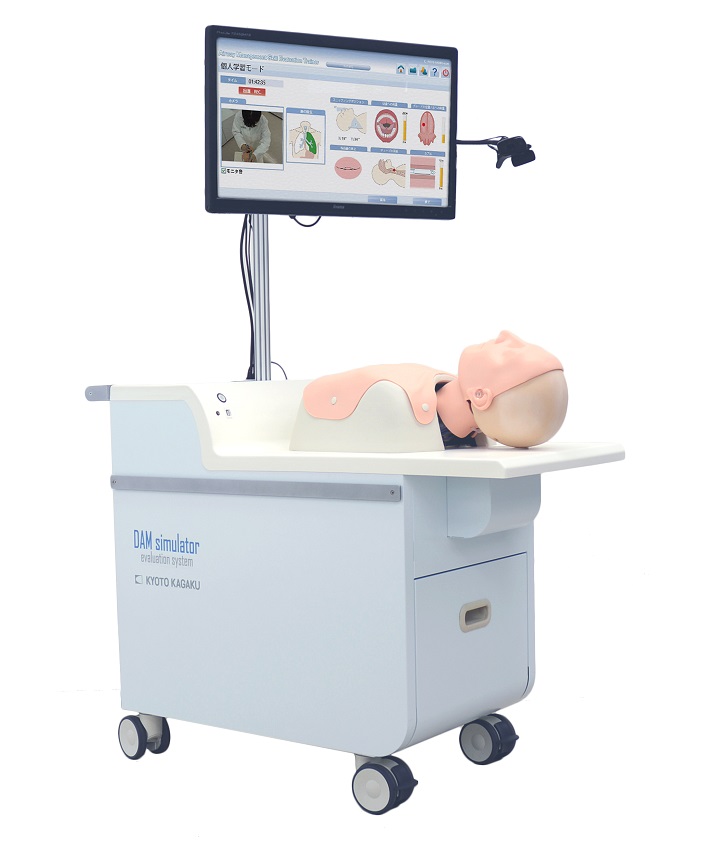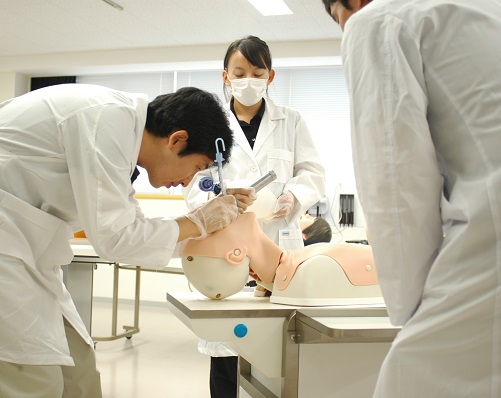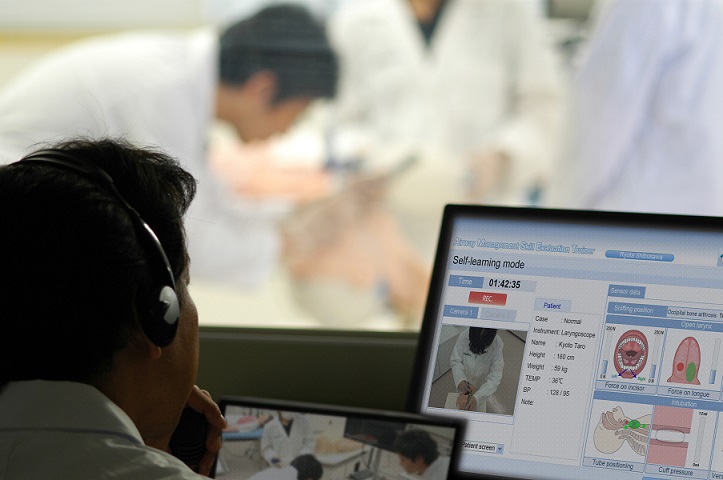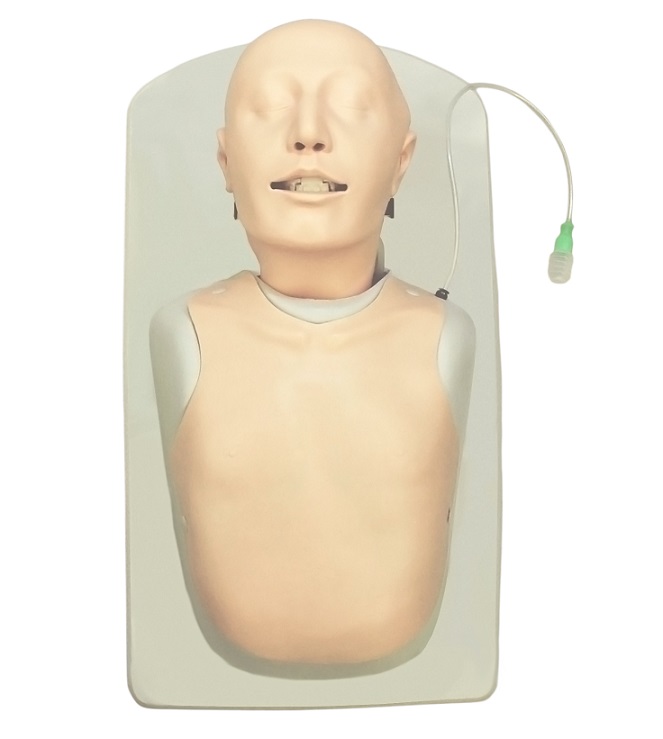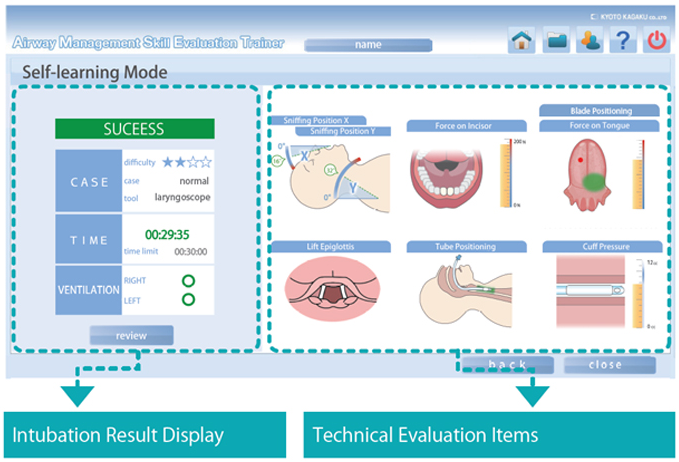Home ->
Medical Education ->
Simulators -> Anesthesia -> Airway Management -> Difficult Airway Management Simulator -Evaluation System
- Difficult Airway Management Simulator Evaluation System is the world exclusive system that pffers objective feedback on intubation skills carried out by "hands-on" with the true-to-life airway manikin real instruments.
- Successful intubation is confirmed based on time to complete and dual lung ventilation.
- Evaluation points are quantitatively monitored and displayed on the screen
- Sniffing position, 2. Force on incisor, 3. Blade Position, 4. Force on tongue, 5. Lift epiglottis, 6. Tube positioning, 7. Cuff pressure)
- Each session's performance and evaluation data can be saved and stored according to the log-in account for review and debriefing.
- Different levels of difficulty for the intubation procedure can be set with the touch panel. The levels are defined as 'Normal' with 3 additional levels.
- All-in-one unit is convenient for training.
- Objective skill evaluation is provided with 23 built-in sensors based on the skill level of a professional.
-
Difficult airway management simulator evaluation system provides 2 learning modes.
- Self-Learning Mode (User can create a personal account when skill-training starts.The results are saved as user's own data).
- Guest-Learning Mode ( If the data does not need to be saved, user can begin training as a guest user without creating a personal account).
Set Includes
1 unit base (including 1 video camera, 1 monitor, 1 manikin)
1 printer
1 stereo mini plug
1 keyboard
1 lubricant for manikin
* Recommended Devices: Macintosh laryngoscope: blade size 3 - Tracheal tube: internal diameter 7.5mm - Video laryngoscope: AWS-S100L
Difficult Airway Management Simulator Evaluation System is the world exclusive system that offers objective feedback on intubation skills carried out by "hands-on" with the true-to-life airway manikin real instruments. Real time visualization of performance on each evaluation point helps to assess trainees' skill as well as to identify the area where trainees need further improvement.
Upper incisors (Set of 10)
Face mask
Pairs of lungs (Set of 5)
Stomachs (Set of 5)
Sensor-installed tongues (Set of 2)
Sensors (Set of 2)

